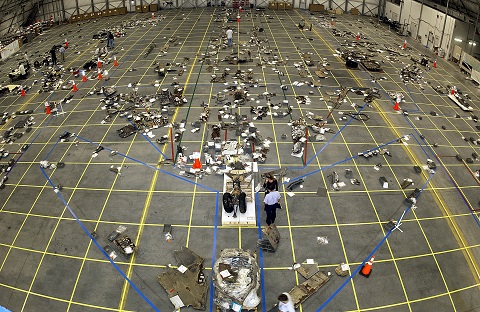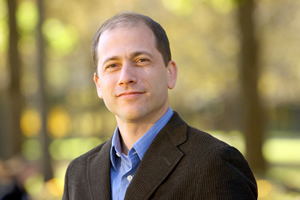Cool job: Flight Accident Investigator
Bob Banks (MD 1996) combines his medical training with an earlier degree in engineering to bring rare insight into the causes and consequences of major vehicle crashes. As a “forensic biomechanic,” he investigates how failure – mechanical and human – might have caused a plane, car or even a space shuttle crash. He also helps determine how, specifically, such crashes might have led to death or injury, and how to prevent them in future. He is a contributing author to the forthcoming book Loss of Signal, a chronicle of the analysis of the crash of Space Shuttle Columbia.
When you were a kid, what did you want to be when you grew up?
A jet pilot.
How did that interest in flight become a career in investigating crashes?
I actually flew jets in the military. As an Air Force flight surgeon, I became involved in aircraft crash investigations. For example, I was part of a team that investigated a Snowbird that went down in Toronto in 1989. I did the same for an RAF Nimrod that crashed in 1995. I had an unusual set of skills – math, engineering, medicine and flying. These things together gave me unique understanding of high-speed accidents and their consequences. In 1997, I moved from Toronto to Texas to join the Biodynamic Research Corporation where I’ve investigated many aircraft crashes and more than 1,500 crashes involving land vehicles.
Not to mention Space Shuttles…
The Space Shuttle Columbia was lost on February 1, 2003 during re-entry from a 16-day mission. Debris scattered over much of Texas.
After the crash, I traveled to Johnson Space Center and to Cape Canaveral to provide advice to investigators. NASA asked my team to analyze the motions of the craft around the time of the accident, safety equipment, and causes and mechanisms of injuries to the crew. Our findings, many of which remain confidential, were used to help improve safety for future missions.
What qualities other than the right academic credentials does one need to be a forensic biomechanic?
I have always been curious, but that curiosity is mixed with a passion for detail, and a respect for process. You have to be disciplined and principled, and – especially – you have to challenge your own assumptions and intuitions. Richard Feynman said that the easiest person to fool is yourself – I always try to keep that in mind.
It can’t be easy dealing with what are inevitably tragic circumstances. How do you handle that aspect of the work?
Most of my time is spent determining whether a specific design or manufacture of an aircraft, helicopter or motor vehicle affected the injury outcome of people involved in crashes. I usually deal with catastrophic injuries leading to permanent impairment (paralysis) or death. These cases almost always involve a lawsuit and so I sometimes work with lawyers and occasionally find myself in courtrooms. It isn’t always easy.
While every case has its own facts, and tragic outcomes, the lessons learned hopefully lead to improvements that help keep people safer.
Recent Posts
U of T’s 197th Birthday Quiz
Test your knowledge of all things U of T in honour of the university’s 197th anniversary on March 15!
Are Cold Plunges Good for You?
Research suggests they are, in three ways
Work Has Changed. So Have the Qualities of Good Leadership
Rapid shifts in everything from technology to employee expectations are pressuring leaders to constantly adapt







One Response to “ Forensic Engineer ”
I know this man and he is quite remarkable.